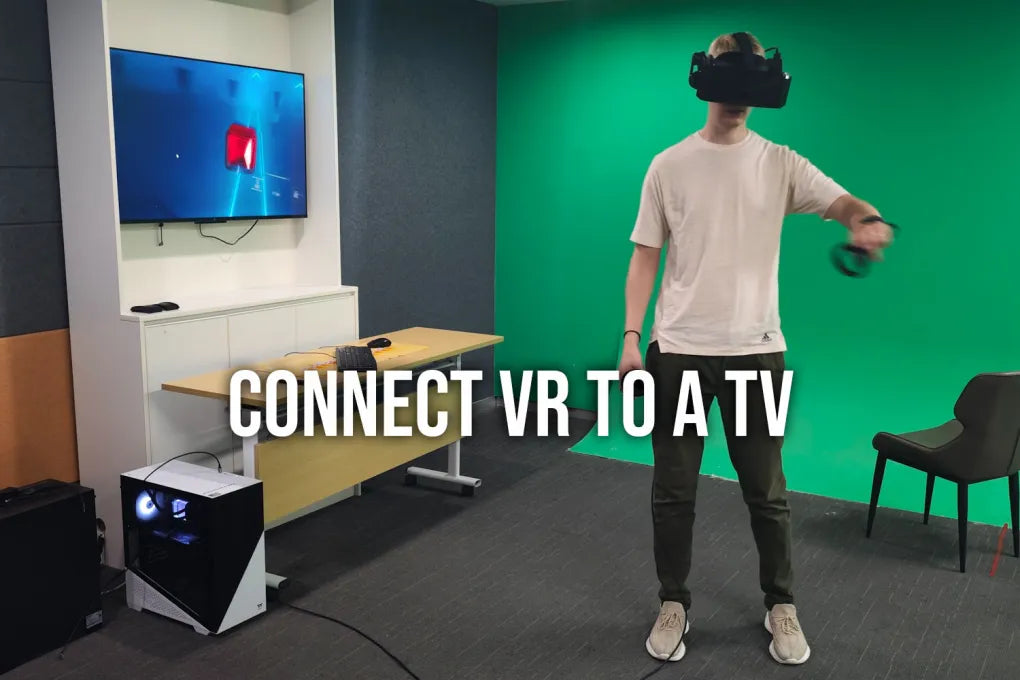Connecting a virtual reality headset to a TV allows others to view what the VR user is experiencing, creating a shared and immersive experience. Here’s a general guide on how to connect a virtual reality headset to a TV.
PC VR headset
PC VR headsets such as the Pimax Crystal connect through a PC rather than standalone headsets (although the Crystal can also do that). Actually, in this case, it’s easier to connect the TV to your computer. Use an additional HDMI port or DP port.
Then when using SteamVR, click on ‘Display VR view’. This effectively mirrors what the wearer of the VR headset sees on your monitor and thus your TV.

You can also connect your TV wirelessly to your computer and thus your VR headset. This works the same way, but you can use a casting software or dongle such as Miracast, Chromecast, Roku and others.
Wireless connection
Some headsets such as the Quest 2 or Quest 3 can cast wirelessly to a TV. You can cast a Meta Quest VR headset to a TV while using a TV with Google Chromecast built-in or a Chromecast streaming device. The easiest way is to use the controllers in the headset. Click on the Oculus button on the right controller, and go to the menu. Click on Camera and select Cast, and select the device you want to cast to.
Good to know
Check Compatibility:
Ensure that your VR headset supports the feature of connecting to a TV. Not all VR headsets have this capability, so refer to the headset’s user manual or support documentation to confirm.
HDMI or Wireless Connection:
Depending on your VR headset, you can connect it to a TV either via an HDMI cable or wirelessly. Some VR systems, like PlayStation VR or the Pimax Crystal, use the Playstation or PC to connect to the TV.
Wireless Connection:
a. Follow the manufacturer’s instructions for setting up wireless connectivity between the VR headset and TV. This may involve pairing devices or using specific wireless protocols.
Power On and Configure Settings:
a. Power on your VR headset and ensure it’s functioning correctly.
b. Turn on your TV and navigate to the input/source that corresponds to the HDMI port connected to the VR headset, or follow the on-screen instructions for wireless setups.
Adjust Display Settings:
Depending on your VR headset and the VR platform you’re using (e.g., SteamVR, Oculus), you may need to configure display settings. This could include adjusting mirroring settings or enabling a specific mode for TV output. Refer to your VR headset’s user manual or on-screen menus for guidance.
Share the Experience:
Once connected and configured, others in the room can watch the VR experience on the TV screen while the VR user is immersed in the virtual world. This enhances the social aspect of virtual reality.
Disconnecting:
When you’re done using the VR headset with the TV, make sure to properly disconnect the HDMI cable or end the wireless connection to avoid any issues in the future.
Remember to consult the user manual or support resources provided by the manufacturer of your specific VR headset for detailed and accurate instructions tailored to your device.








